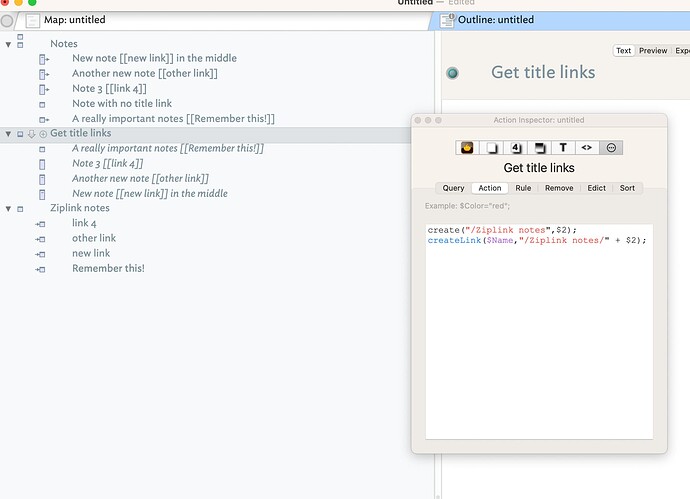I’m not sure I remember it that way. The original request was a faster way for a touch-typist [sic] to be able to enter text-links. The hare having been set running there was co-incidence with text-based entry of links. The latter is common from those stepping up from having used any of the many wiki+Markdown-based PKMs† around at present. The latter, web style, can only make links by embedding them (web style) into an article. This creates the impression this is the only way links are made and thus increases interest in a type-only link entry method. I don’t recall discussion of speed, other than the touch-typist having to take their hands off the keyboard.
Thus as so often, a suggestion led to a feature that took a difference course. Currently, it seems most popular with those for whom making a link involves typing something in double brackets [[…]], as that is how they perceive linking happening (i.e. like in a wiki-based system). There’s no right/wrong in that, just differing degrees of breadth of knowledge of linking methods.
A lot of PKM have ended up with a wiki+Markdown mechanism, mainly I’m guessing by copying existing apps. This is not how Tinderbox works. The ‘zip’ linking method, aka ‘ziplinks’ in Tinderbox mimics this wiki-style. But note:
- the process creates a text link. There is no such thing in Tinderbox as a ‘ziplink’, only a text link that was made via typed input. Howsoever created, all text links are just text links. Text links all have text anchors, in the text ($Text) of a note. Tinderbox, unlike wiki-based PKM/processes allows linking to/from notes (basic links) or form/to text of notes (text links, including zip-created links.
In Outline view the labels you see are the title of the note ($Name) which is a separate piece of the note’s data. So is the idea that typing in a note title makes a basic link to another note, or that it adds a text link to the $Text?
Given that, the idea suggested is possible (anything is potentially possible) is not entirely practical. It’s a fair amount of engineering for a sub-set of users, mainly for the reason of making Tinderbox run against its gears so as to be like a wiki PKM. I see the convenience: the user doesn’t need to learn to use Tinderbox in any depth. What I don’t understand is why use Tinderbox and not use the power it has to offer. Using it like a wiki strikes me like buying a racing car and never leaving first gear. But I’m not assuming I’m ‘right’, I’m just missing the value of this.
Probably. Easier is to make the note, press Return (to exit title edit), then Opt+Tab to set focus to the new note’s $Text. so the fast entry tempo is:
- Return to make a new note
- type title
- Return to close edit
- Opt+Tab to set focus in current note’s $Text.
- Use zip method to add text link(s)
- Opt+Tab to set focus back in view pane‡, current note selected
- Return to start next note
- etc.
†. This isn’t throwing shade at an unnamed app, or apps. Rather, I’m pointing up the fact that a lot of PKMs at the moment draw from the wiki model, which I find more meagre in terms of richness of linking. The wiki is a hypertext based on the Web concept. A hypertextual weakness of the Web design is links are embedded in text of a note; the richer hypertext notion of a linkbase (links stored separately from articles/page) is out of their reach. Tinderbox does use a link base allowing richer linking. Making it run like a wiki seems a retrograde step.
‡. The Opt+Tab cycle is actually View pane focus (any view type) → selected note $Text focus → current note’s Displayed Attributes table (if any!) → view pane focus. As new notes don’t, by default have Displayed Attributes, the above holds true. If Displayed Attributes are present, e.g. a parent container is setting a prototype that has Displayed Attributes then the three-way cycle apples.
![]()
